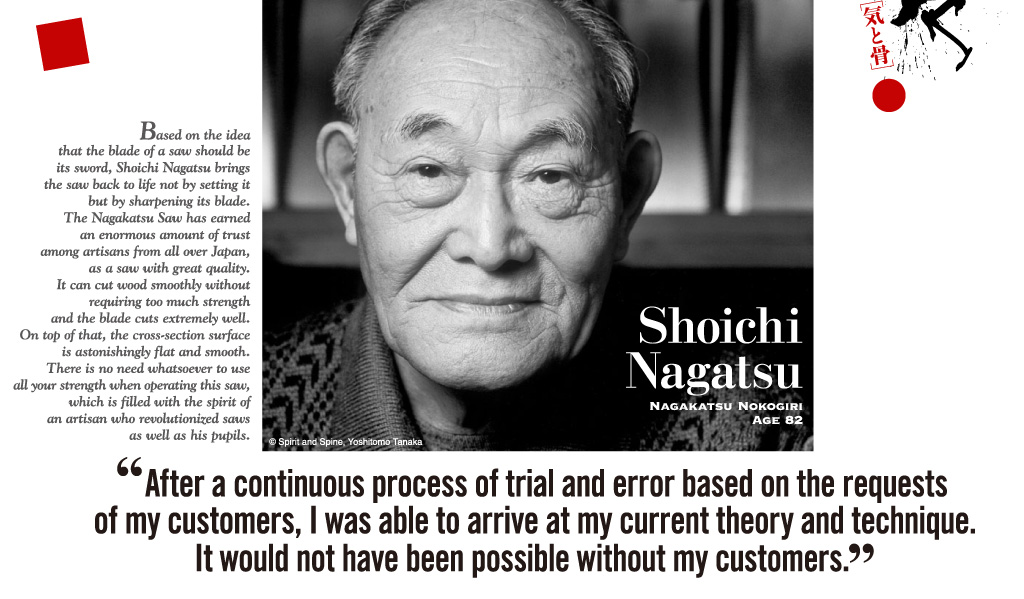The sound of metal being filed echoes throughout the studio, which is full of saws waiting to be repaired. These saws include everything from large ones for logging to tiny ones for craftwork. Carpenters, woodworkers, cabinetmakers, gardeners, and professional foresters have continued to place orders. Even if it’s a saw from the early Showa Period, if Nagatsu sharpens the blade with his careful touch, the wood can be sawed with ease without holding the saw too tightly. All you need to do is hold the saw straight and cut the wood without thinking about anything. It's as simple as that. Drastic reductions in the amount of effort required and improvements in workmanship have satisfied his customers. His skills come to life at the sites of restoration projects for cultural property and traditional crafts. Many of the original pruning saws are purchased by housewives. The reason for this is because these saws are easy to handle as they do not require a significant amount of arm strength.
Nagatsu started his own business at the age of 20. His company grew into one of the top companies in Sapporo as it recorded the highest sales among power tool and carpenter’s tool retailers as well as saw sharpening businesses. But many of his clients went bankrupt owing to the Heisei Recession (a recession that occurred in the 1990s). In light of these circumstances, he readily decided to close his business before it went bankrupt. Nagatsu says that those dire circumstances are difficult to comprehend unless you experience it.
A few years ago, he moved his business to Kyoto through personal ties. This master continued to receive more and more orders through word of mouth. People who know him, love him. He also developed a favorable online reputation, a trend that began overseas and made its way back to Japan. Nagatsu had been forced to close his business owing to the circumstances of the times. Now, it is the times that connects him with the rest of the world. His craftsmanship, which is based on exploration and conviction, is universal. Nagatsu said that he was amazed by the diligence of the participants of his workshops that were held overseas. But it was probably those participants who were amazed deep down. The seeds of the “Nagatsu Way” are growing steadily all over the world.







































































































